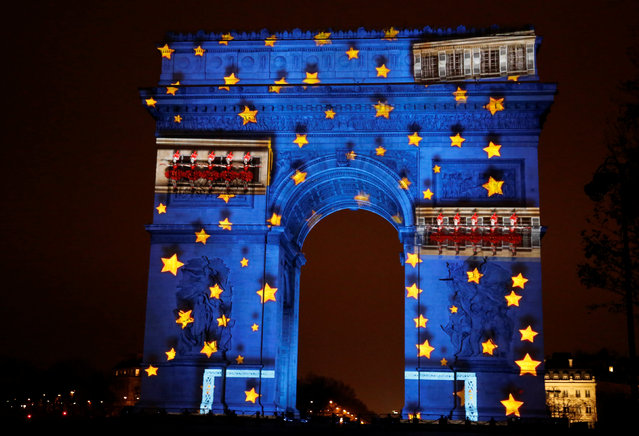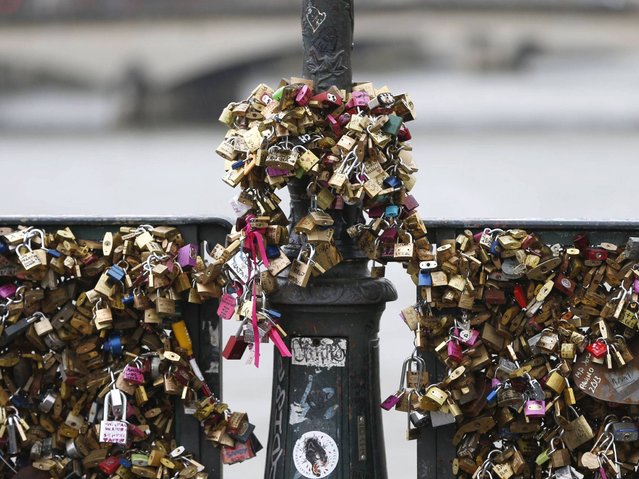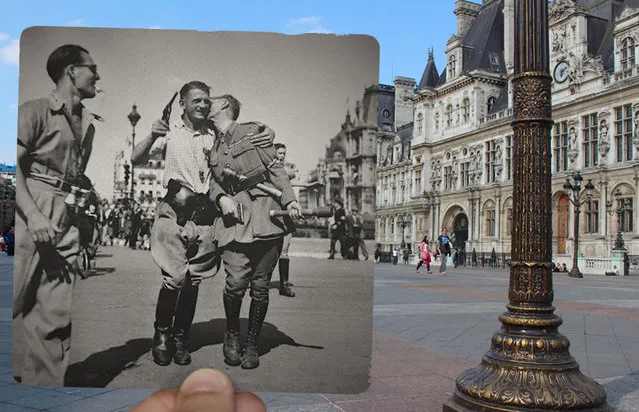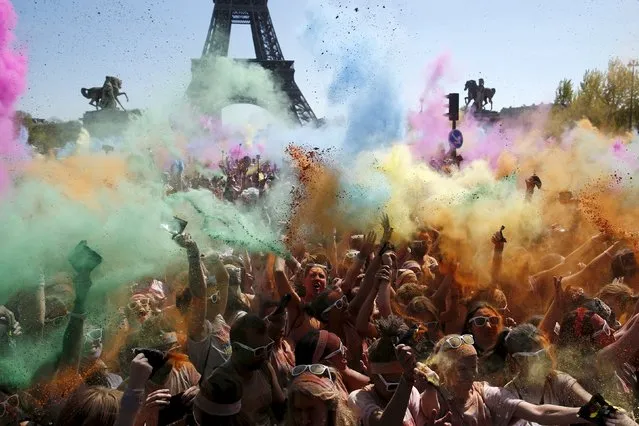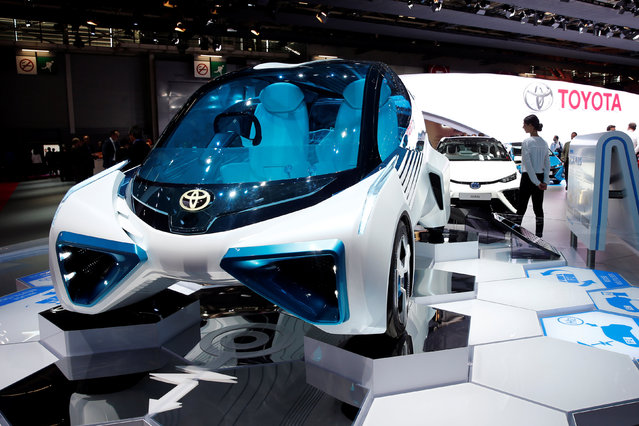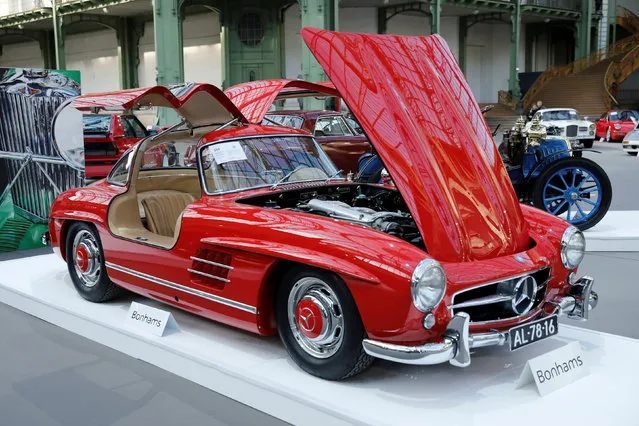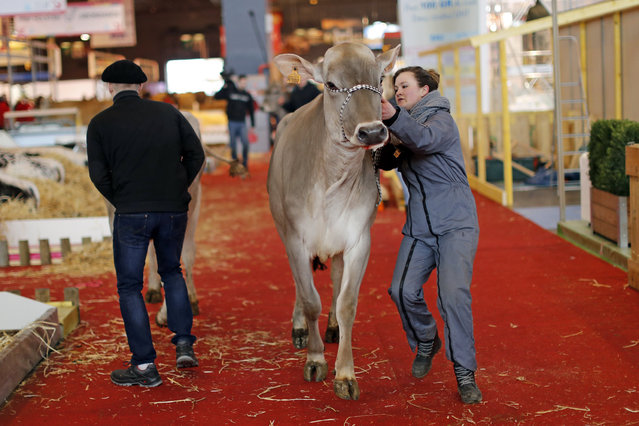
A French farmer leads her cow through the livestock area as preparations continue on the eve of the opening of the International Agricultural Show in Paris, France, February 26, 2016. The Paris Farm Show runs from February 27 to March 6, 2016. (Photo by Benoit Tessier/Reuters)
27 Feb 2016 10:24:00,post received
0 comments


